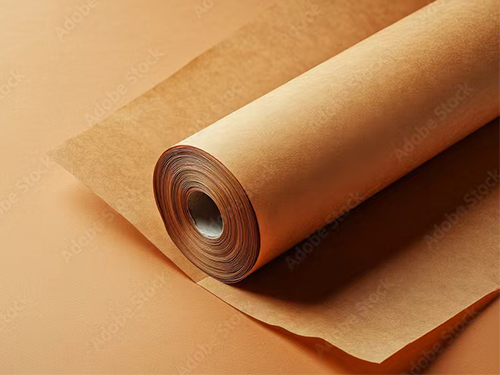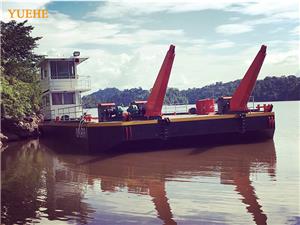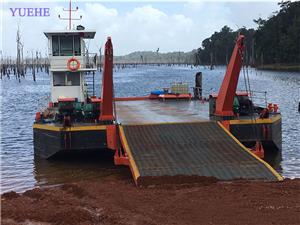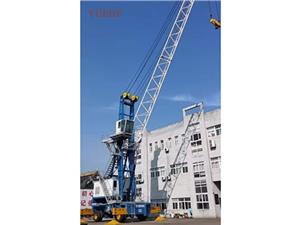Classification and Applications of Kraft Paper
Cellophane paper is a type of high-strength packaging paper made from sulfate coniferous wood pulp (or a mixture of certain proportions of recycled fibers). Due to its strong, wear-resistant, water-resistant and moisture-proof properties, it is widely used in packaging, printing, industrial and other fields. Its classification is mainly based on raw materials, processes, properties and applications. Different types of cellophane paper have their own focuses in terms of functions and application scenarios. The following will provide a detailed explanation from the aspects of classification and application:

I. Classification of Kraft Paper
The classification standards for kraft paper are diverse. The common classification methods are as follows:
Classified by raw material type
• Native wood pulp kraft paper: Made from 100% unbleached sulfite conifer wood pulp (such as pine, spruce), it has long fibers and high strength (burst strength ≥ 2000 kPa, ring-pull index ≥ 12 N·m/g), and is the mainstream type of high-end kraft paper (such as food-grade, heavy-duty packaging paper).
Recycled kraft paper: Made from recycled waste paper (such as paper boxes and cardboard), after de-inking and screening, it has a relatively low cost but slightly lower strength (burst strength usually < 1500 kPa). It is suitable for packaging with low performance requirements (such as ordinary cargo bags).
• Mixed pulp kraft paper: A blend of virgin wood pulp and recycled fibers is mixed in a certain proportion (e.g. 70% virgin + 30% recycled), taking into account both cost and strength. It is widely used in mid-range packaging scenarios.
2. Classified by color and whiteness
• Natural kraft paper: Unbleached, it retains the brownish-yellow color of natural lignin (with Lab color values approximately L50~70, a15~25, b*30~45). It has strong environmental friendliness and is commonly used for food packaging and products with a retro style.
• Bleached kraft paper: After mild bleaching (such as with hydrogen peroxide), the whiteness is increased to 60% to 80% (close to that of ordinary white paper), but there is a slight increase in fiber damage. It is suitable for packaging that requires a light color appearance (such as inner boxes for cosmetics).
3. Classified by strength grade
• Ordinary kraft paper: Burst strength 800 - 1500 kPa, Ring compression index 8 - 12 N·m/g, suitable for light-load packaging (such as express bags, document bags).
• Heavy-duty kraft paper: Burst strength 1500 - 3000 kPa, Ring compression index 12 - 20 N·m/g, Strong in tear resistance, used for packaging heavy goods (such as mechanical parts boxes, cement bags).
• Extra-heavy-duty kraft paper: Burst strength > 3000 kPa, Ringing Index > 20 N·m/g. It requires special processing (such as long-fiber pulp, high-pressure calendering) to be produced and is used in scenarios with extremely heavy loads (such as packaging for large equipment trays).
4. Classified by processing techniques
• Uncoated kraft paper: The surface is uncoated and retains the fiber texture. Its printing suitability is average (requires water-based ink), but it has good air permeability and is suitable for food packaging (such as coffee bags, tea bags).
• Coated kraft paper: The surface is coated with kaolin or calcium carbonate paint, resulting in improved smoothness and printing gloss (similar to coated paper), suitable for high-end color printing packaging (such as gift boxes, brand brochures).
• Glossy Kraft Paper: Processed by a super glossing machine, it has a high surface smoothness (roughness ≤ 2μm), suitable for scenarios requiring high-quality printing or adhesion (such as label paper, self-adhesive backing paper).
5. Classification by Functional Characteristics
• Waterproof kraft paper: The surface is coated with a waterproofing agent (such as paraffin, polyethylene), with excellent water resistance. It is used for packaging in humid environments (such as seafood and frozen food bags).
• Oil-resistant kraft paper: By applying surface sizing (such as acrylic) or adding oil-resistant additives, it prevents oil from penetrating, and is suitable for food packaging (such as hamburger boxes, potato chip bags).
• Sterilized kraft paper: Sterilized using ethylene oxide or gamma rays, it complies with medical packaging standards (such as ISO 11607), and is used for the outer packaging of medical devices and medicines.
II. Application Scenarios of Kraft Paper
The core advantages of kraft paper are its high strength, weather resistance and environmental friendliness. It is applied in packaging, printing, industry and daily consumption fields, as follows:
Packaging field (the main application)
• Heavy-duty packaging: Heavy-duty kraft paper combined with honeycomb cardboard or paper corner guards is used to make pallets and packaging boxes. It is used for the transportation packaging of large equipment (such as machine tools, motors) and building materials (such as tiles, stones), replacing some wooden pallets to reduce costs.
• Food packaging: Unbleached/anti-oil kraft paper is used for bread bags, coffee filter bags, and chocolate gift boxes (must comply with FDA/GB 4806 food contact standards). Its natural texture aligns with the marketing demands of "healthy food".
• Daily necessities packaging: Ordinary kraft paper is used to make express delivery bags, clothing tags, and inner linings for cosmetics (such as powder compact boxes, perfume bags), featuring both low cost and environmental attributes (reusable and degradable).
2. Printing and Labeling Sector
• Cultural Printing: Coated kraft paper, due to its smooth surface and natural color, is used for book covers (such as hardcover books), magazine inserts, and inner pages of notebooks, creating a retro style.
• Commercial Label: Glossy kraft paper, as a label substrate, is suitable for information identification of electronic products (such as back stickers for mobile phones), and industrial components (such as engine labels). It is resistant to friction and does not easily come off.
3. Industrial and Engineering Fields
• Wrapping and Protection: Uncoated kraft paper is rolled into a cylinder shape, replacing some plastic films to provide temporary protection for pipes and steel materials (such as rust prevention for steel pipes at construction sites); or it is made into a wrapping film (requiring tensile properties) to be used for packaging large workpieces.
• Filter material: High-tensile strength kraft paper (such as unbleached sulfite pulp) is treated with resin impregnation to produce industrial filter paper (for example, lubricant filtration, air dust removal), suitable for high-temperature and high-precision filtration scenarios.
4. Other Special Scenarios
• Handcraft and Art: Unbleached kraft paper, due to its rough texture and strong plasticity, is used in handmade book production, paper sculpture art, and decorative elements for journals (such as collage art, three-dimensional greeting cards).
• Medical and Laboratory: Sterile kraft paper is used for packaging surgical instruments and sealing the caps of laboratory sample collection tubes. Its chemical-free property ensures biological safety.
III. Model Selection Suggestions
When choosing kraft paper, it is necessary to consider the load requirements, environmental conditions and functional requirements:
• For heavy goods packaging, choose extra heavy-duty kraft paper (with a burst strength of > 3000 kPa);
• The food contact scenario selects unbleached/anti-oil kraft paper (requiring food-grade certification);
For color printing scenarios, use coated kraft paper (to enhance the printing effect);
For humid environments, use waterproof kraft paper (with wax coating or PE).
Summary
The classification of kraft paper reflects its diversity in terms of strength, function and appearance, and its application scenarios revolve around its core advantages of "durability and environmental friendliness". With the advancement of the green packaging trend, the demand for recycled kraft paper and food-grade kraft paper continues to grow. In the future, kraft paper will further develop in the directions of packaging reduction and functional complexity (such as moisture-proof and antibacterial).




